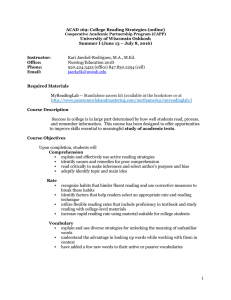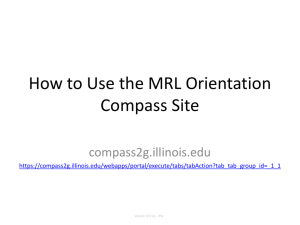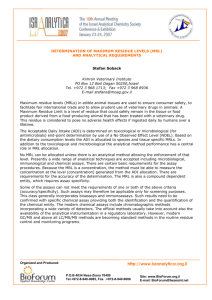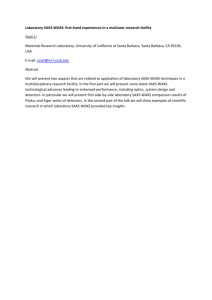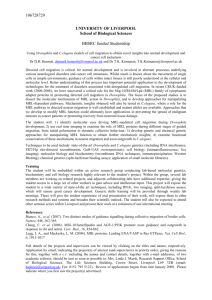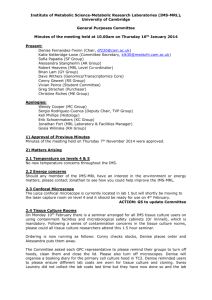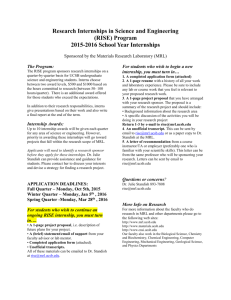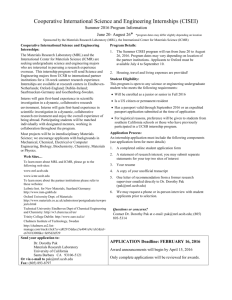Presentation
advertisement
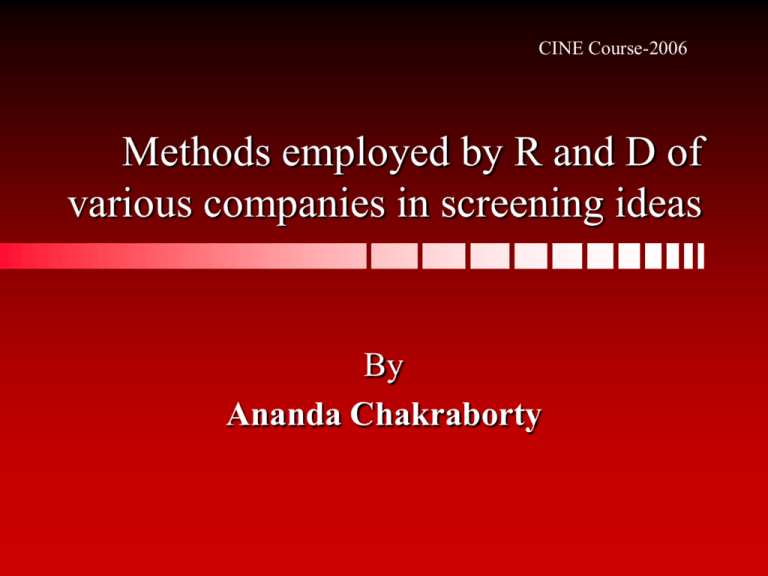
CINE Course-2006 Methods employed by R and D of various companies in screening ideas By Ananda Chakraborty Introduction • R and used in two types of role • develop new products, molecules • reduce cost or improve product/ service quality • New Product development: Agrochemical Industry • Patent law is an important contention here Typical Registration process for Agrochemical 2. CIB & RC, Ministry of Agriculture (Registration & Scrutiny) Submits application along with data 1. Applicant Deficiency report Admn Office Legal Chemistry Bioefficacy Registration Committee Packaging Toxicology 4. Ministry of Health (MRL Fixation) 5. Central Insecticides Laboratory (Testing) For Products Manufactured in India Secretariat scrutinizes residue pro forma SCPR studies data and recommend s the MRL CCFS studies SCPR recommendati on and approves MRL Inspector visits site and collects the sample Sample analysis For Imported Technicals Submit samples Sample analysis 3. ICAR Time required for a Registration Activity 9(4) – “Me Too” registration 9(3) and 9(3b) Fresh Registration Documentation and Form 1 and other documents verification by legal 0.5 month 1 month CIB&RC analysis, covering: 1-3 months 6-12 months Sample submission, collection & Analysis 2-6 months 2-6 months MRL Fixation (Ministry of Health) 1-2++ months 3-12 months Registration Certificate Issuance 2 months 2 months OVERALL PROCESS Minimum 6 months Minimum 12-36 months • • • • Chemistry Bioefficacy Toxicology Packaging Some more facts about Agrochemical industry • For launching one noble chemical in crop protection • 140,000 molecules are tested • $ 210 m ($184 m in 1999) spend • 9.1 years on average from 1st synthesis to marketing R and D process in agrochemicals New Lead Think of a new target compound Evaluate results Synthesise target SCREEN N O Novel Product CN N O MeO2C OMe Parameters for screening The following parameters are used by projecting them 10 – 12 years ahead… • Activity & Selectivity – 1st Consideration (Performance Parameters) • Properties of the chemical, Residual toxicity and Soil toxicity – 2nd Consideration (mainly environmental parameters) • Patentability, Cost of manufacturing and others – 3rd Consideration (mainly commercial parameters) R and D in manufacturing Industry • Tata Motors – 3 plants Product Improvement In Plant R and D Process Improvement R and D in Tata Motor ERC (central level) Research and Development Structure at Tata motor • Product improvement • Input from dealers • Input from service persons • Process Improvement • • • • When the process itself needs to be modified starts working with a major problem Brainstorming, Exploration of probable causes Experimentation and Recommendation Criteria for screening • Effectiveness of the idea on the cause • Ease of implementation i.e. the disruption to the manufacturing process should be minimum • Cost effectiveness Here an optimum combination of Effectiveness & Ease of implementation is desired first and then cost effectiveness is the distinguishing factor. Innovative ideas from shop floor employees are also encouraged and rewarded Conclusion • Consideration of the market • Difference in judging criteria : once a process is established, no major changes • Difference in new product vis-à-vis improvement based research : aggregate level business decision and functional decision THANK YOU
